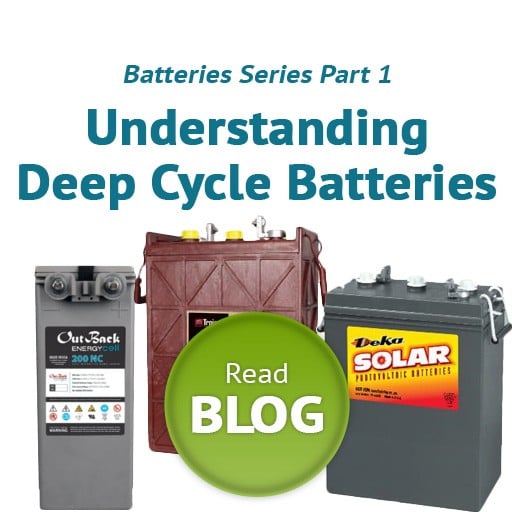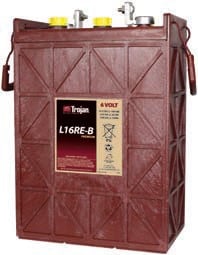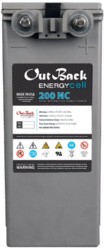
 Deep cycle batteries are a critical component in off-grid solar or hybrid grid tie solar power systems. We thought we’d go over some of the common terms with you to help wade through all of the information. It is possible to write entire books about batteries, but we are just going to touch on some of the basics of lead acid batteries. Don’t worry, we’ll discuss more later in a future blog.
Deep cycle batteries are a critical component in off-grid solar or hybrid grid tie solar power systems. We thought we’d go over some of the common terms with you to help wade through all of the information. It is possible to write entire books about batteries, but we are just going to touch on some of the basics of lead acid batteries. Don’t worry, we’ll discuss more later in a future blog.
Lead Acid Battery Types
When selecting a deep cycle lead acid battery for your system, there are two primary types of batteries available, flooded or sealed.
 Flooded Lead Acid Deep Cycle Batteries
Flooded Lead Acid Deep Cycle Batteries
A flooded lead acid battery has removable vents that you must remove to check the specific gravity of the acid with a hydrometer and add distilled water on a regular schedule, usually once a month. Because it is not sealed, it is designed to output the hydrogen and oxygen gas that is created during its charging process. Therefore the battery bank MUST be properly vented to the outside to prevent the oxygen and hydrogen gas from igniting. We highly recommend using a specialized battery vent fan which is specially designed to not spark while safely moving the gases out.
If you are looking to have flooded batteries shipped, be aware that they are considered hazardous material by the Department of Transportation, so additional precautions and expenses may be required.
The advantage of these flooded batteries is that they are less expensive than a typical sealed battery, and a well maintained flooded battery will generally last longer than a typical sealed battery. But if you neglect the battery and do not perform the maintenance, you will quickly have a dead battery bank on your hands.
 Sealed Lead Acid Batteries, AGM and Gel
Sealed Lead Acid Batteries, AGM and Gel
Sealed lead acid batteries are most commonly available as either AGM (Advanced Glass Matt) or Gel. This refers to the form of the electrolyte. An AGM battery has the electrolyte in a spongy mat, and the gel batteries have a thicker gel that keeps itself distributed within the battery. There are slight pros and cons to each of these designs that we won’t get into, but in general, both types of sealed batteries are very similar.
The biggest advantage of sealed batteries is that since they are sealed, they won’t spill or outgas much. This makes it a safer option than flooded batteries. They also don’t require the monthly maintenance, just occasionally inspect them to see that they look to be in good shape. Sealed batteries are an excellent choice for battery backup systems that aren’t charged and discharged every day, but require a long standby period. They also do better in extreme cold than flooded batteries, and usually ship as non-hazardous material.
The downside to the sealed batteries is that they tend to be more expensive than a flooded battery, and have a shorter life than a well maintained flooded battery. But it you are not able or willing to maintain a flooded battery, sealed is definitely the way to go.
Stay tuned for our future blog post which will help you understand the terminology and science behind charging deep cycle batteries, depth of discharge, state of charge and more.
